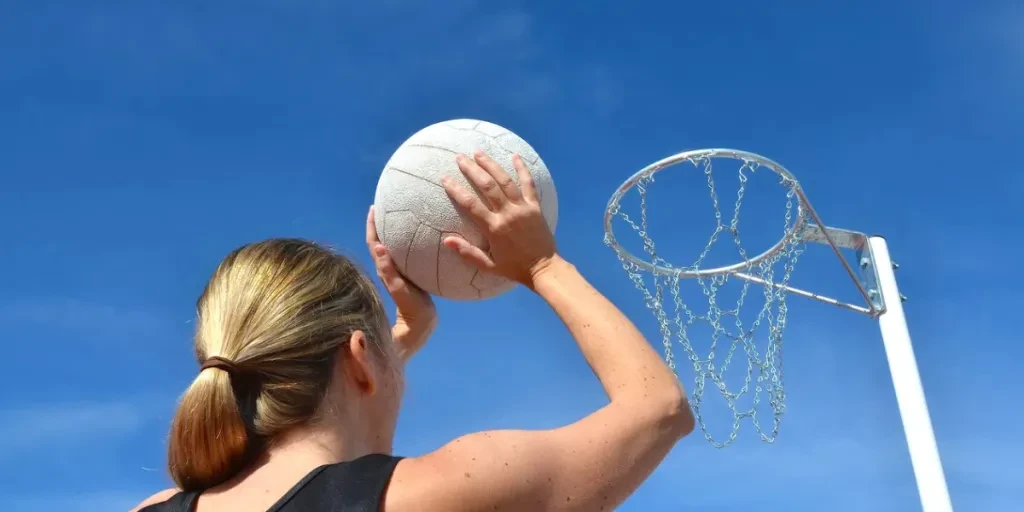Netball, a sport enjoyed by millions worldwide, has seen significant advancements in its equipment, particularly netball balls. As the game evolves, so do the materials and designs of the balls used, enhancing performance and player experience. This article delves into the market overview of netball balls, highlighting key trends and insights that are shaping the industry.
Table of Contents:
– Market Overview of Netball Balls
– Innovative Materials and Design Trends in Netball Balls
– Technological Advancements Elevating Netball Ball Performance
– Customization and Personalization in Netball Balls
Market Overview of Netball Balls

The netball ball market is experiencing a dynamic shift, driven by technological advancements and changing consumer preferences. According to a report by Statista, the global sports equipment market, which includes netball balls, is projected to reach significant revenue milestones in the coming years. This growth is fueled by increasing participation in sports and a rising demand for high-quality, durable equipment.
In New Zealand, for instance, the basketball merchandise market, which shares similarities with netball in terms of equipment needs, was projected to reach US$519.40k in 2024. Despite a minimal annual growth rate (CAGR 2024-2029) of 2.49%, the market is expected to achieve a volume of US$587.50k by 2029. This trend indicates a steady demand for sports equipment, including netball balls, as consumers continue to invest in quality products.
The market dynamics in New Zealand are influenced by several factors, including consumer spending, disposable income, and overall economic growth. A thriving economy with high disposable income per capita and strong consumer demand for sports-related products can lead to higher sales and market growth. Conversely, a declining economy with low consumer confidence can result in lower sales and market contraction. Additionally, government policies and regulations related to international trade, taxes, and tariffs can impact the market, especially for imported sports merchandise.
In Australia, the basketball merchandise market is projected to reach US$2.46m in 2024, with an annual growth rate (CAGR 2024-2029) of 1.65%, resulting in a projected market volume of US$2.67m by 2029. This growth is indicative of a broader trend in the sports equipment market, where consumers are increasingly seeking high-quality, durable products. The average revenue per user (ARPU) in the basketball merchandise market is projected to amount to US$6.29 in 2024, highlighting the willingness of consumers to invest in premium sports equipment.
The market for netball balls is also influenced by regional preferences and trends. In Australia, for example, the popularity of the National Basketball League (NBL) and the country’s strong basketball culture drive demand for related merchandise, including netball balls. The country’s climate and outdoor lifestyle make outdoor sports equipment more popular, further boosting the market for netball balls.
Key players in the netball ball market include major sports equipment manufacturers and retailers who are continuously innovating to meet the evolving needs of consumers. Companies such as Gilbert, Mitre, and Molten are at the forefront of this market, offering a range of netball balls designed for different levels of play, from amateur to professional. These brands are known for their commitment to quality and performance, ensuring that players have access to the best equipment available.
Future trends in the netball ball market are expected to focus on sustainability and eco-friendly practices. As consumers become more environmentally conscious, there is a growing demand for products that align with their values. This trend is evident in New Zealand, where there has been a noticeable increase in the demand for sustainable and eco-friendly basketball merchandise. This shift towards conscious consumerism is likely to influence the netball ball market as well, with manufacturers exploring sustainable materials and production methods.
Innovative Materials and Design Trends in Netball Balls

High-Performance Materials for Enhanced Play
The evolution of netball balls has been significantly influenced by the introduction of high-performance materials. These materials are designed to enhance the overall playability and durability of the balls, ensuring that they meet the rigorous demands of the sport. One of the key materials used in modern netball balls is synthetic leather. This material offers a perfect balance between durability and grip, making it ideal for both indoor and outdoor play. Synthetic leather is also resistant to water and other environmental factors, which helps in maintaining the ball’s performance over time.
Another innovative material that has gained popularity in the manufacturing of netball balls is polyurethane (PU). PU is known for its excellent elasticity and resilience, which contribute to the ball’s ability to retain its shape and provide consistent performance. Additionally, PU is lightweight, which enhances the ball’s maneuverability and control during play. The use of these high-performance materials not only improves the quality of the netball balls but also ensures that players can perform at their best, regardless of the playing conditions.
Cutting-Edge Design Features for Optimal Grip and Control
In addition to high-performance materials, the design of netball balls has also seen significant advancements. One of the most notable design features is the textured surface of the ball. This texture is specifically engineered to provide optimal grip, allowing players to have better control over the ball during passes and shots. The textured surface also helps in reducing the chances of the ball slipping, which is crucial in a fast-paced game like netball.
Another important design feature is the panel construction of the ball. Modern netball balls often feature a multi-panel design, which enhances the ball’s aerodynamics and stability. This design ensures that the ball travels smoothly through the air, making it easier for players to execute accurate passes and shots. Additionally, the multi-panel construction helps in distributing the pressure evenly across the ball, which contributes to its overall durability and performance.
Technological Advancements Elevating Netball Ball Performance

Smart Technology Integration in Netball Balls
The integration of smart technology in sports equipment has revolutionized the way athletes train and perform, and netball balls are no exception. One of the most exciting advancements in this area is the incorporation of sensors within the ball. These sensors can track various metrics such as the speed, spin, and trajectory of the ball. This data can be analyzed to provide valuable insights into a player’s performance, helping them to identify areas for improvement and optimize their training routines.
Smart technology can also be used to enhance the fan experience. For instance, real-time data from the sensors can be displayed during live broadcasts, providing viewers with a deeper understanding of the game. This not only makes the game more engaging for fans but also helps in promoting the sport to a wider audience.
Durability and Longevity through Advanced Manufacturing Techniques
The durability and longevity of netball balls have been significantly improved through advanced manufacturing techniques. One such technique is the use of thermal bonding, which involves fusing the panels of the ball together using heat. This method eliminates the need for stitches, which are often the weakest points in a ball’s construction. As a result, thermally bonded balls are more resistant to wear and tear, ensuring that they maintain their performance over a longer period.
Another advanced manufacturing technique is the use of reinforced bladder technology. The bladder is the inner part of the ball that holds the air, and reinforcing it with additional layers of material can significantly enhance its durability. This ensures that the ball retains its shape and pressure, even after extensive use. These advancements in manufacturing techniques not only improve the quality of the netball balls but also provide players with a more reliable and consistent playing experience.
Customization and Personalization in Netball Balls

Tailoring Netball Balls to Team and Player Preferences
Customization and personalization have become increasingly important in the sports industry, and netball is no exception. Teams and players now have the option to tailor netball balls to their specific preferences, ensuring that they have the best possible equipment for their needs. This can include customizing the weight, size, and grip of the ball to suit individual playing styles. For instance, some players may prefer a lighter ball for faster passes, while others may opt for a heavier ball for better control.
Customization can also extend to the aesthetics of the ball. Teams can choose to have their logos and colors printed on the ball, creating a sense of identity and unity. This not only enhances the team’s brand but also boosts the players’ morale and confidence on the court.
The Rise of Custom-Branded Netball Balls for Marketing and Identity
The rise of custom-branded netball balls has opened up new opportunities for marketing and brand identity. According to a professional report, brands that advocate for women’s sports and offer personalized products are more likely to resonate with female consumers. This trend is evident in the increasing number of brands partnering with sports teams and events to create custom-branded equipment.
For example, New Balance’s partnership with the WNBA to feature custom-branded balls and other merchandise has helped the brand to grow in the women’s sports segment. Similarly, Puma’s collaboration with Modibodi to launch “The Change Room” initiative, which included custom-branded sportswear, has been well-received by female athletes. These initiatives not only promote the brands but also support the growth and development of women’s sports.
Conclusion
The advancements in materials, design, technology, and customization have significantly transformed the netball ball industry. These innovations not only enhance the performance and durability of the balls but also provide players with the tools they need to excel in the sport. As the demand for personalized and high-quality sports equipment continues to grow, it is likely that we will see even more exciting developments in the future. Brands that embrace these trends and invest in the latest technologies will be well-positioned to lead the market and support the growth of netball as a global sport.




